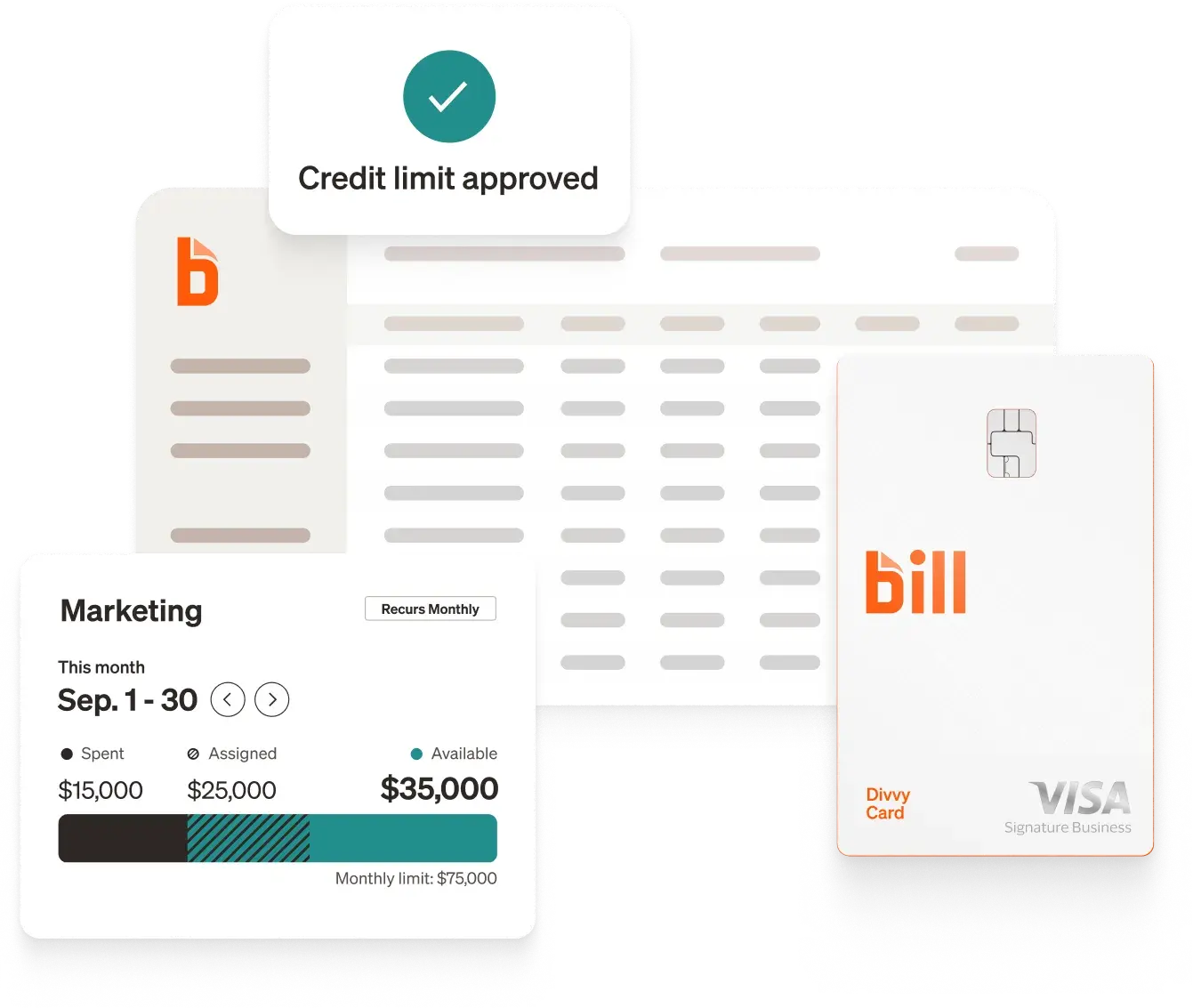One way small businesses can increase profits and improve cash flow is to reduce expenses. Long term plans to reduce expenses are important, but being able to affect your bottom line in the short term can make a major impact as well.
Here are ten ways you can cut your business expenses this month.
What are business expenses?
Business expenses are the everyday costs of operating a business. Business expenses come out of your revenue and determine your overall profit.
Types of business expenses
- Overhead cost: any cost associated with running the business that isn’t directly related to the product or service. Examples include rent, office supplies, and insurance.
- Fixed cost: any cost that is predetermined. Examples include rent and membership fees.
- Variable cost: any cost that changes based on volume, use, timing, or market values. Examples include utilities, inventory prices, and hourly payroll.
- Recurring cost: any cost that will repeat on a weekly, monthly, or yearly basis. Examples include payroll, utilities, and memberships.
Many costs to your business are fixed expenses, meaning they are the same every single month (think mortgage or rent, license or membership fees). Variable expenses, such as payroll or inventory orders, might be minimized or mitigated.
A list of common monthly business expenses
Monthly business expenses are often fixed or variable costs that recur on a monthly basis. Since these are recurring on a guaranteed basis, they're prime for cost-cutting because every month, you’ll benefit from the newfound efficiency.
Businesses commonly have these monthly business expenses on their books:
- Employee salaries and wages
- Employee benefits and staff perks
- Insurance premiums
- Rent or mortgage payments
- Lease payments
- Utilities
- Account fees
- Dues and subscriptions
- Software subscriptions
Common recurring business expenses
Some recurring business expenses don’t happen monthly. These may be on a weekly or annual basis. In some cases, these don’t occur on a set schedule, but it’s still a given that they will recur throughout the year.
Common recurring business expenses include:
- Cost of goods sold
- Office supplies
- Marketing
- License fees
- Accounting fees
- Property taxes on real estate
- Overhead costs
- Web hosting
- Building maintenance
- Business taxes
Common one-time business expenses
One-time business expenses arise as needed. Cutting these costs means taking frugal approaches, trying to limit the need, and looking for cost-sensitive solutions.
Examples of one-time business expense categories include:
- Business startup costs
- Research
- Equipment and building repairs
- Attorney fees
- Incorporation fees
- Vehicle expenses
- Travel expenses
- Business meals
What are tax-deductible business expenses and should you cut those costs?
Many business expenses are tax deductible. Every dollar spent on tax-deductible expenses reduces the taxable income you report to the IRS at the end of the year. Simply put, tax deductible expenses lower your tax bill.
This doesn’t mean you should ignore tax-deductible expenses when cutting costs. No matter the tax deductibility of an expense, you should consider it as part of your cost-cutting strategy.
For starters, $1 in tax deductions only saves you a fraction of that amount on your taxes. And while it’s nice to get some of the money you spent on tax-deductible expenses back at the end of the year, that’s months of time before those savings are realized.
It’s smart to think about tax deductibility when prioritizing what costs to cut and save money. But all expenses should be scrutinized as part of your cost-cutting strategy.
10 ways to cut your monthly business costs now
Managing a long list of monthly business expenses can feel overwhelming, but these 10 cost-cutting strategies can help you trim spending and boost profitability right now.
1. Invest in automation
Streamlining your operations and procedures with technology can mean significant savings, both in dollars and in time. Upgrading your accounting software to manage expenses or facilitate data entry or analysis can help with budgeting and identifying errors or fraud. Using a CRM (customer relationship management) system can help you close more sales and also free up hours for your staff to pursue more revenue.
Automation and the introduction of new software might mean upfront cost and a slight learning curve, but the results can be both immediate and perpetual. As software services continue to update, you may find that one of your tools can now serve multiple purposes, allowing you to cancel or move away from other platforms and time-wasting practices.
2. Outsource and consolidate
Are a large number of your employees managing their own appointments, doing their own bookkeeping, or writing? Are your salespeople wasting hours on marketing? It may be time to outsource elements of operations to outside experts.
Instead of spreading work around to all employees, you can actually save money and create more time for revenue-generating work by hiring outside consultants or freelancers. Contract work is usually cheaper, as it doesn’t include the overhead of benefits and taxes.
You may also consider consolidating your workforce, having some employees pick up additional responsibilities (a raise for doing more work may be cheaper than hiring a new employee), or minimizing the working hours of employees. It may not be a sustainable option for the long term, but for a one or two-month trial, you may be able to see significant savings by trimming employees or employee hours.
3. Hire interns
Hiring interns is a popular choice that can create a win-win situation for everyone involved. Interns are volunteer or lower-cost employees, often college or high school students looking to gain industry experience. Consider creating an intern position with flexible hours and cost-effective pay that will end up benefiting your business. Interns can manage the tasks that are slowing down revenue-generating work. Two or three interns can be cheaper than the cost of a single full-time employee, which can allow you to continue the work without the extra overhead.
4. Consider quick cuts
The best way to make a fast and dramatic impact on your monthly expenses is to make cuts. Take a look at your existing monthly expenses, both variable expenses and fixed expenses, and see if there are any that can be eliminated, even if just on a temporary basis.
Lunch, snacks, and other extra workplace perks and supplies are an easy first step for cuts that can reduce your business expenses this very month. Cancel subscriptions, used and unused, for a one-click impact on your monthly expenses. Minimize marketing and advertising budgets and freeze discretionary spending within your departments–things like customer meals and travel can add up quickly.
5. Audit your expenses and operating costs
Performing an audit of your business operating expenses might take an afternoon, or even a full day, but it can illuminate your business decisions to reduce costs this month. Pore through your credit card statements, bank statements, invoices, payroll, every utility bill, and any other financial records you might have. Look carefully for any areas where you may be overspending.
Are you paying more for utilities than you expected? Can you negotiate lower rent or a payment plan for invoices? Did you notice a recurring business expense, such as a subscription, that you could’ve sworn you cancelled? Are you paying an underperforming employee too much? Is your employee gym membership perk being utilized? Can you be more cost-effective by getting multiple bids or finding new vendors?
This kind of work can be tedious, but usually results in multiple areas of immediate financial improvement. Enlist the help of your accountant or your financial team to find trends and problems in your business operations.
6. Price shop and negotiate
Once you’ve conducted your operating expense audit, you should have a good idea of where your business money is going. Consider negotiating lower prices or more favorable payment terms on your bigger commitments or fixed expenses, such as rent or vendor payment plans.
Take a few hours to price-shop your current expenses. Your best-case scenario is finding a more affordable option, and your worst-case scenario is confidence that you have the best pricing for your needs.
7. Sell unused items and sublease unused space
Most businesses have something in excess that they can sell for more immediate profits. Consider minimizing your rental space this month, or mitigate the costs by subleasing your unused space. You may be able to mitigate the cost of your rent or mortgage by splitting up space, or leasing the space that is unused during the weekdays, or finding ways to lease the space for evenings and weekends if unoccupied.
8. Ramp up organic marketing
If you have paid marketing campaigns that are producing well—by all means, continue with that strategy. But consider dropping paid campaigns that aren’t producing ROI and instead focus your efforts on free marketing efforts. Double your networking efforts and consider customer marketing, such as a referral program that can bring in business at no additional cost.
Social media can provide advertising and brand outreach while cutting your monthly expenses. In addition to your own social pages and website, find other avenues to promote your brand by collaborating with similar companies or influencers. Consider appearing on a podcast or webinar or swap a guest post with a partner.
The best part about an organic marketing strategy is that it is free or incredibly low cost, potentially trimming your advertising expenses to zero. If you’re looking to reduce business expenses, consider investing in high-quality content marketing.
9. Maximize your employee hours
Are you taking full advantage of everything your team has to offer? Check in with employees to see if they have untapped skills or interests that can help them maximize their satisfaction and contributions. Foster a culture of time efficiency by setting deadlines for projects and rewarding those who exceed expectations. Give underused employees more responsibilities and set higher expectations for those who are underperforming.
10. Zero in on strengths
By limiting what you offer, you can actually optimize your skills and expenses. For example, if you are spending far too much time on video resources for your web design clients, you may consider subcontracting your video services and narrow your focus to the web page design basics you prefer. Don’t be afraid to stop providing services or products that are simply costing you too much.
Cut your monthly business expenses with spend management automation
Your cost-cutting is only as effective as your ability to understand your spending and enforce change. You need clear, accurate reporting with real-time visibility to understand just how efficiently the business is operating at any given moment.
With BILL Spend & Expense, transactions are automatically reconciled with instant categorization and detailed descriptions, giving you the insights you need, when you need them. Whether it’s a bird’s-eye view or a nuanced breakdown, you get instant insights that guide cost-cutting.
Upgrade your expense management virtual cards that have automated checks to ensure no one is overspending. Only transactions at approved retailers for set amounts will be processed, and cards can be frozen instantly if needed.
One switch and you’ll save money from automated workflows while improving your expense management and oversight. No more overspending or overexerting, just better finances.
Reach out for a demo and take the first step to keeping your costs in check.








